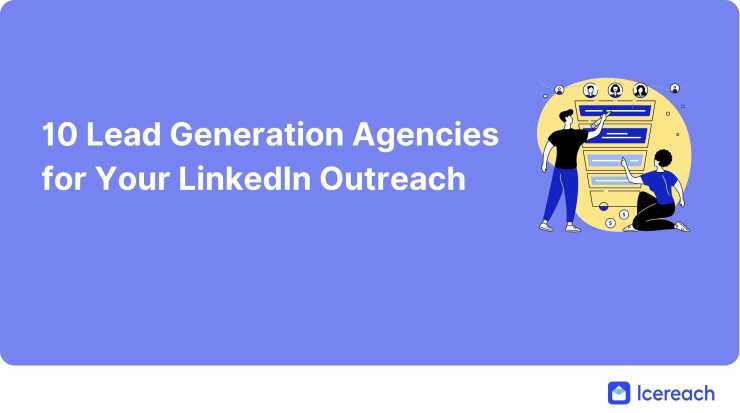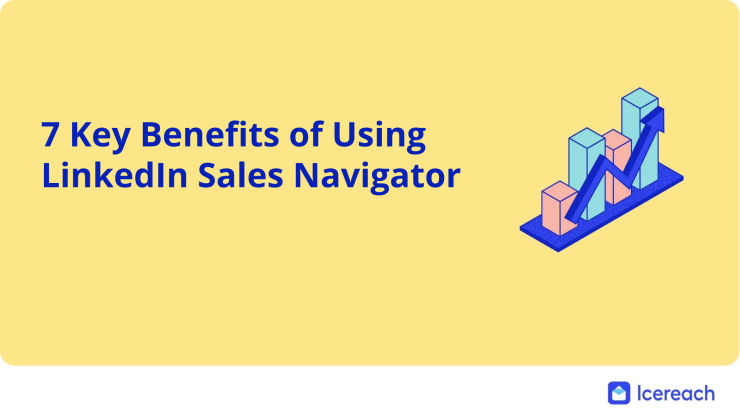A cold LinkedIn outreach means contacting people with whom you’ve never talked before, and establishing a rapport can be daunting.
But there is a right way to go about it and get those replies.
If you follow a few best practices, avoid the most common mistakes, and get inspiration from templates and examples that have proven successful, you’ll be able to make the connections you need.
Keep reading, and you’ll find out everything you need to know about writing Linkedin outreach messages and follow-ups that get replies on LinkedIn 👇
Why Send Linkedin Outreach Messages to Your Prospects?
Presenting your business, expertise, and products to a new audience who can give you feedback will add great value.
Some prospects might even become partners in reaching different goals.
The most common reasons for a cold outreach campaign are:
To promote the business
To increase sales leads
To recruit and expand your team
What’s more, connecting and having conversations with new people can open your eyes to a lot of new information on improving and scaling every single part of your business.
Who Do You Contact In a Cold Outreach Campaign?
You decide who you want to contact when creating your list of prospects. During a cold outreach, you should typically look at the following:
Connections you haven’t talked to before. You may have people in your feed who post interesting and relevant content to your business, yet you’ve never interacted with them. Reach out and start building a relationship.
2nd-degree connections. Start looking at who your first connections interact with, and send those invitations to connect. It’s always easier to establish a connection if you have mutual acquaintances.
3rd-degree connections. Even without a direct link to them, your third-degree connections (people connected to your 2nd-degree connections) might unveil some great networking opportunities.
People in groups. Professional groups attract like-minded individuals with a lot in common. The connections you’re looking for might be in the groups you follow.
When to Send a Cold Outreach Message on LinkedIn?
Do you want to extend your business network or get more leads and insights into your products? Well, those are precisely the right moments for cold outreach.
It’s not a matter of date and time.
Depending on the industry, demographics, working hours, cultures, or even personal working styles of the people you approach, acceptance and reply rates for messages sent at different times will vary.
Note: If you’re looking for a specific time or day of the week for sending your LinkedIn messages, you won’t get a clear answer. Simply try to accommodate the working hours of your prospects.
When to Send a Cold Outreach Message on LinkedIn?
Do you want to extend your business network or get more leads and insights into your products? Well, those are exactly the right moments for cold outreach.
It’s not a matter of date and time.
Depending on the industry, demographics, working hours, cultures, or even personal working styles of the people you approach, acceptance and reply rates for messages sent at different times will vary.
Note: If you’re looking for a specific time or day of the week for sending your LinkedIn messages, you won’t get a clear answer. Simply try to accommodate the working hours of your prospects.
No data can pinpoint a day and hour when sending outreach messages, resulting in improved reply rates. Since LinkedIn is a professional network, we advise just sticking to people’s regular working hours when they’re more likely to be online.
When Do You Follow Up?
Just because someone hasn’t replied to a message doesn’t necessarily mean they’re not interested.
When people don’t reply, most times it’s because:
They didn’t read the message yet
They read your message but put it on the back burner to answer at a later time
They read your message but are unsure of its value
They’re simply not interested and didn’t get the chance to tell you
If you’re dealing with one of the first 3 scenarios, a follow-up or two can help remind, clarify, and convince your prospect.
Tip: The key is not to spam people with too many follow-ups, sent almost one after another. Stick to 2 or 3 follow-ups, and schedule a day or two in between them, just to give people time to think and answer first.`
While a few follow-ups, sent over a few days, are simply a friendly reminder, suffocating and insisting messages every few hours can only annoy the recipient.
6 Tips on Writing the Best Messages and Follow-ups
Speaking of tips, here are a few best practices for sending messages and follow-ups during a cold outreach on LinkedIn.
#1. Be Human and Personalize Your Messages
The last thing you want to do is to send boring, impersonal bulk messages to everyone. Those standard copy-paste messages add no value and don’t show any trait of your personality.
Always have a human-to-human approach and a casual tone of voice. Write in your style, and personalize each message you send for every person who will receive it.
Be funny, curious about the other person, and maybe even add a touch of flattery. People connect with people.
#2. Find Things You Have in Common
Why do you want to reach out to a certain person in particular? Be relatable.
Are you in the same field? Have they published anything you loved, or do you simply have many of the same professional connections? Tell them what you have in common and how that translates into opportunities for both of you.
#3. Keep It Short and Clear
Be direct and on-point with your information. No one has the time to read lengthy novels on LinkedIn, just for the sake of it.
Introduce yourself and simply tell them how connecting with you is beneficial.
#4. Make Sure the Message Is Relevant to Them
You need to connect with the right audience: people who might be legitimately interested in your proposal for valid reasons and not just because you want them to be.
Why would they ever answer if what you’re offering is not relevant to their work and needs?
#5. Present Mutually Beneficial Proposals (Give Them a Reason to Reply)
LinkedIn relationships should not just be purely transactional.
Yes, your ultimate goal is probably to increase sales one way or another, but LinkedIn connections should be mutually beneficial, even if they don’t end in a direct sale.
Establish a relationship first, discuss the pros of a partnership, and offer people a reason to reply.
#6. Follow Up with Another Message
No answer straight away? No problem.
Give it a day or two and come back with a follow-up message to kindly remind them of your pitch.
Reiterate your initial message and include a few more details that can spark their interest even more.
5 Mistakes to Avoid in Your Outreach Messages
Now that you’ve gone through what you should do take a look at a few mistakes that can kill your outreach efforts.
#1. Don’t Sound Like a Robot
This goes to the above tip of being human.
If your messages are too generic, have no sense of a personality, and could be easily sent to everyone in the world, the chances of getting replies are slim to none.
You need to put in the work and research the people you’re messaging. Otherwise, no one will bother researching your offer either.
#2. Don’t Oversell
Your LinkedIn inbox is not an ad platform. There are plenty of paid advertisement platforms to choose from, but this one is not one of them.
People lose interest when they feel they’re just being sold something insistently.
To get a rapport with someone, you need to show them how you can help and be specific about it.
#3. Don’t Clickbait
This one should be a no-brainer: never offer more than you can deliver, just to get a reaction and a reply.
While a clickbait message might get you a reply, the relationship will soon fizzle once people realize you’ve been misleading. You’ll just end up with leads not interested in becoming long-term customers and waste both your and their time.
Clickbait will kill your credibility. Be true to your company, product, and services.
#4. Don’t Spam
While outreach can be a numbers game, this does not mean you need to send hundreds and hundreds of messages per day.
In fact, LinkedIn frowns upon spamming people in messages and might strike or ban your account if you go over 100 invites per week.
#5. Don’t Follow Up Every 5 Minutes
You shouldn’t send countless messages daily to the same people, either. Especially if you see they’re ignoring you.
Yes, you need to follow up sometimes, but there’s a right and wrong way.
Key Takeaways
The way to create connections through LinkedIn cold outreach is to offer your help and time, not necessarily your products or services.
Don’t forget to be human, friendly, and relatable while avoiding some of the most common mistakes.
Prepare a good strategy, choose safe tools if you automate the process, and write some simple and effective templates.
Find the right audience, establish a rapport first, and build trust. Sales will follow naturally.





